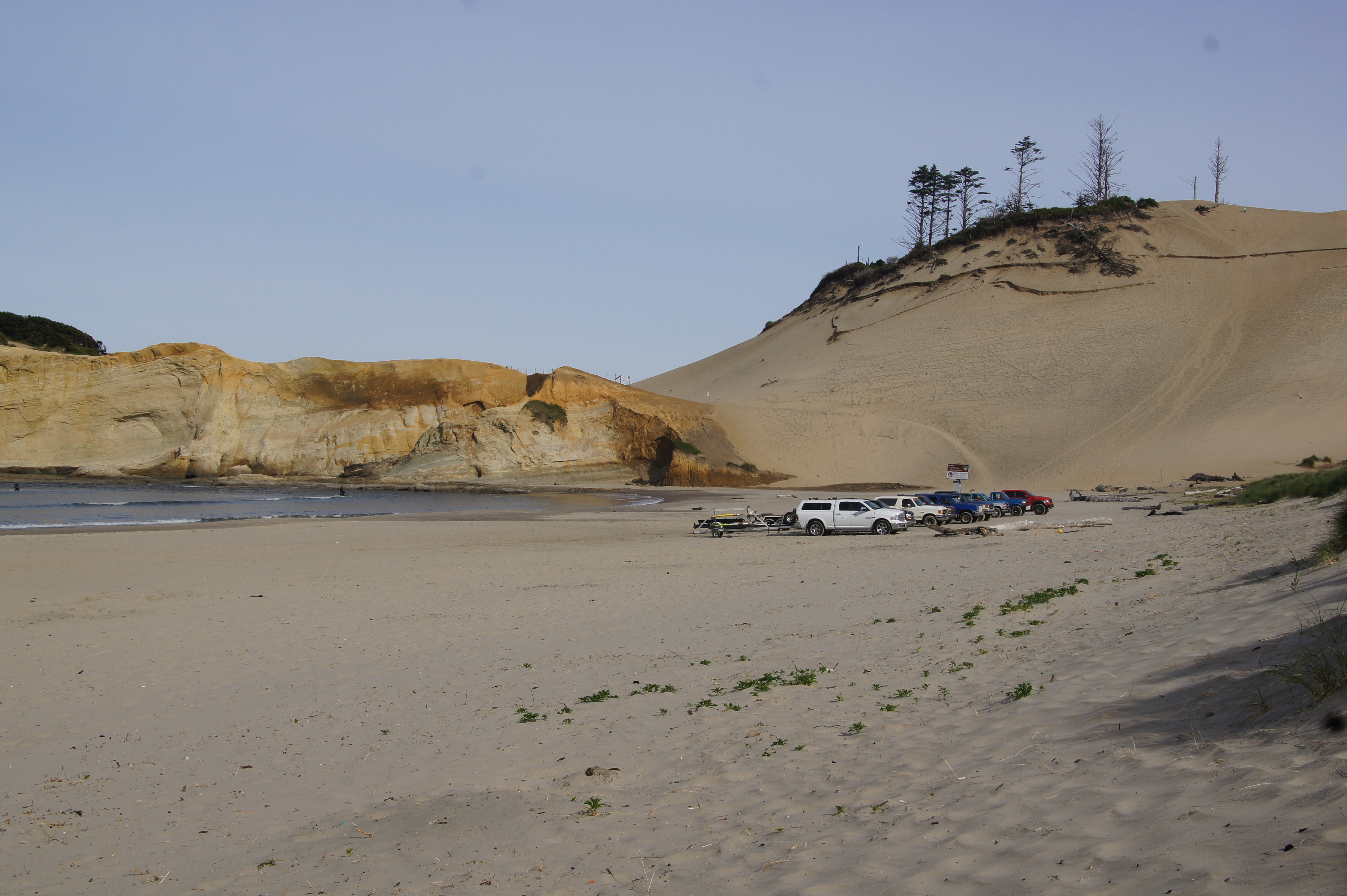Rugged rocks. Crashing waves. There’s something about the Oregon Coast that makes you feel like you have hit the end of the earth and at the time we went, I was glad for the feeling. My dad had just died, and I felt like if I walked out onto the ocean, I’d meet him where the sky and sea collided.
We’d taken Amtrak from Minneapolis to Portland, Ore. where we rented a car. We planned to do a big loop through Oregon, beginning with the Coast.
Astoria, Oregon
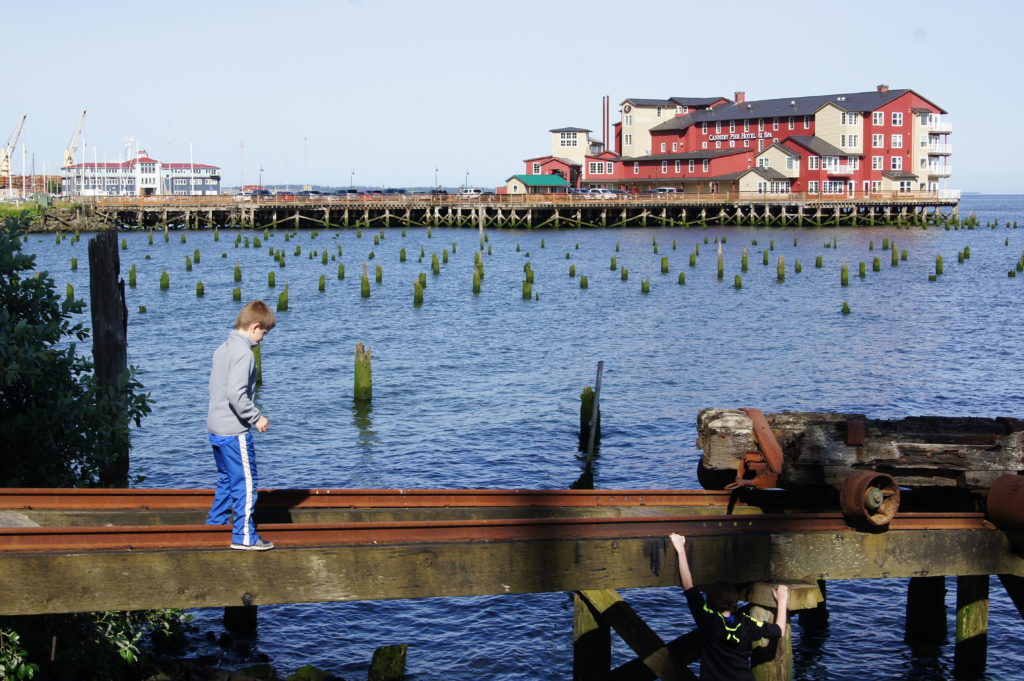
We arrived in Astoria, a former timber port 90 minutes northwest, and the city was colder than I expected.
Don’t turn your back on the sea, residents warned, and it was a warning our kids intuitively knew to heed. Waves smacked against the rocks like hands of an angry god. Thousands of lives have been claimed by these waters, particularly where the Pacific Ocean and the Columbia River collide. Waves can reach 40 feet in height.
We paid homage to sailors’ souls at the Columbia River Maritime Museum, followed by a stop at Fort Clatsop, where the Lewis and Clark expedition wintered more than 200 years ago.
Where to stay: The Cannery Pier Hotel
Cannon Beach, Oregon
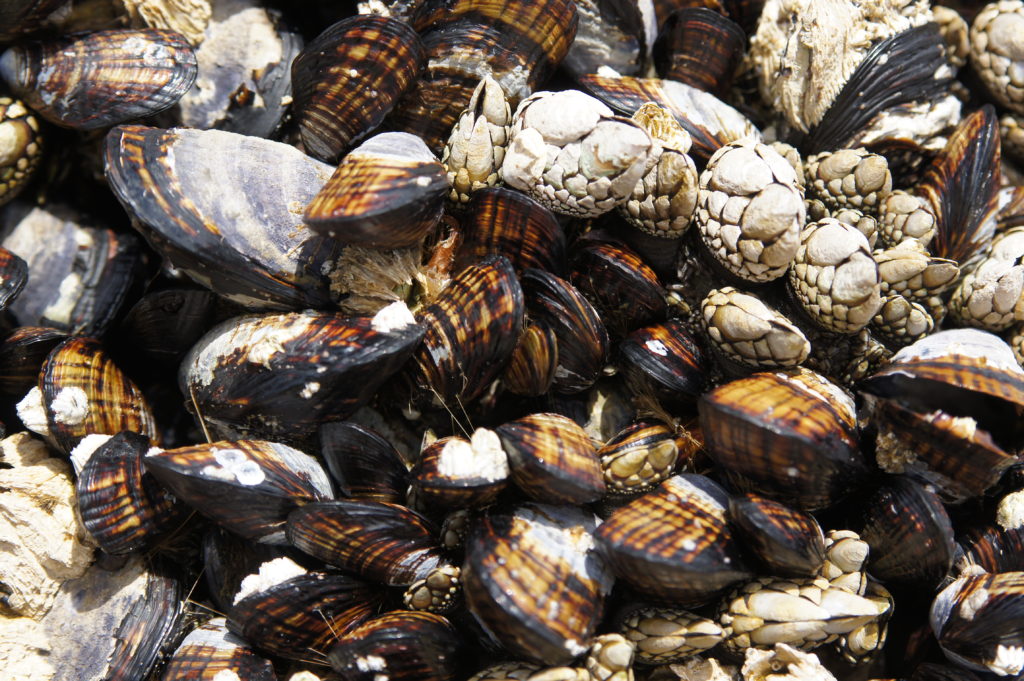
Further south, we strolled along Cannon Beach to Haystack Rock, a 235-foot monolith formed by lava flows, rising up out of the ocean in the distance.
Barefooted, we stopped to explore the tide pools, or fragile ecosystems created in crevices by tides that have come in and since left. The creatures captured within – bright anemones and starfish, urchins and sculpins – survive by adapting. Their life was tenuous, dependent on the next tide washing in.
Sandy-footed, we stopped for ice cream in the cedar-shingled village, wandered in and out of art galleries, and tried as many bowls of rich, creamy clam chowder as we could.
Where to stay: Stephanie Inn
The Three Capes Scenic Loop
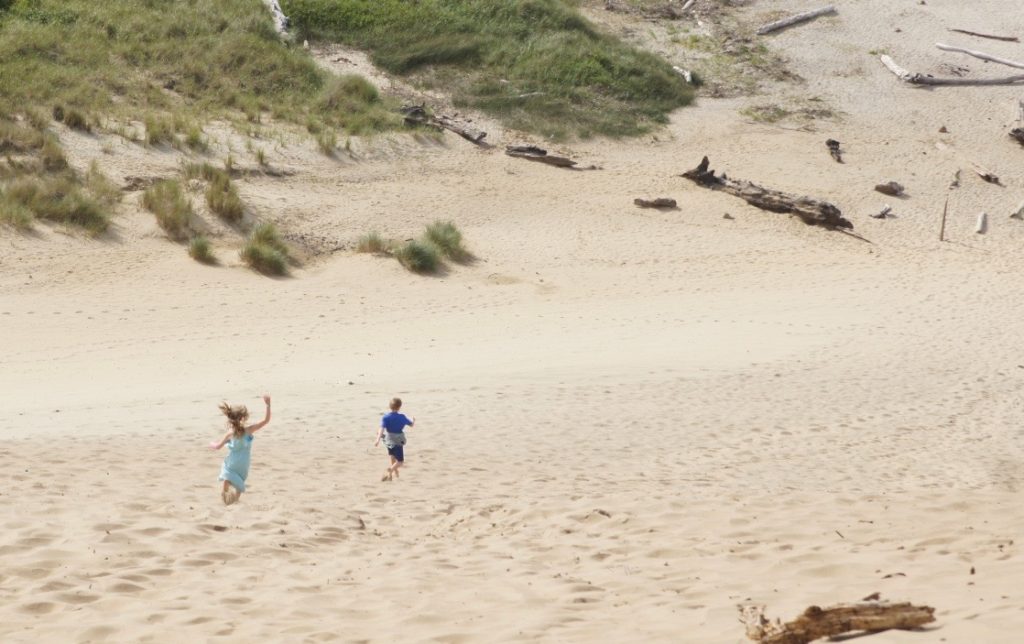
My feet slipped and gulls shrieked while I climbed up the six-story-high sand dune at Cape Kiwanda State Natural Area. This area has also claimed many lives particularly in roped-off areas due to the shifting sands, splintering sandstone ledges, and sudden sea surges.
“Come on, Mom!” our children called, their feet spraying sand as they trekked to the top.
The other side of the sand dune was a cliff edge. Instinctively, I did a headcount to make sure our children were safe. Only then could I enjoy the beauty of the orange-hued coves tucked between boulders below.
In Oregon, there are no private beaches; everybody has a legal recreational right to the 363 miles of coastline. As the fiery sun descended behind Haystack Rock, pick-up trucks began to roll onto the beach and bonfires were lit. The shore felt like party central.
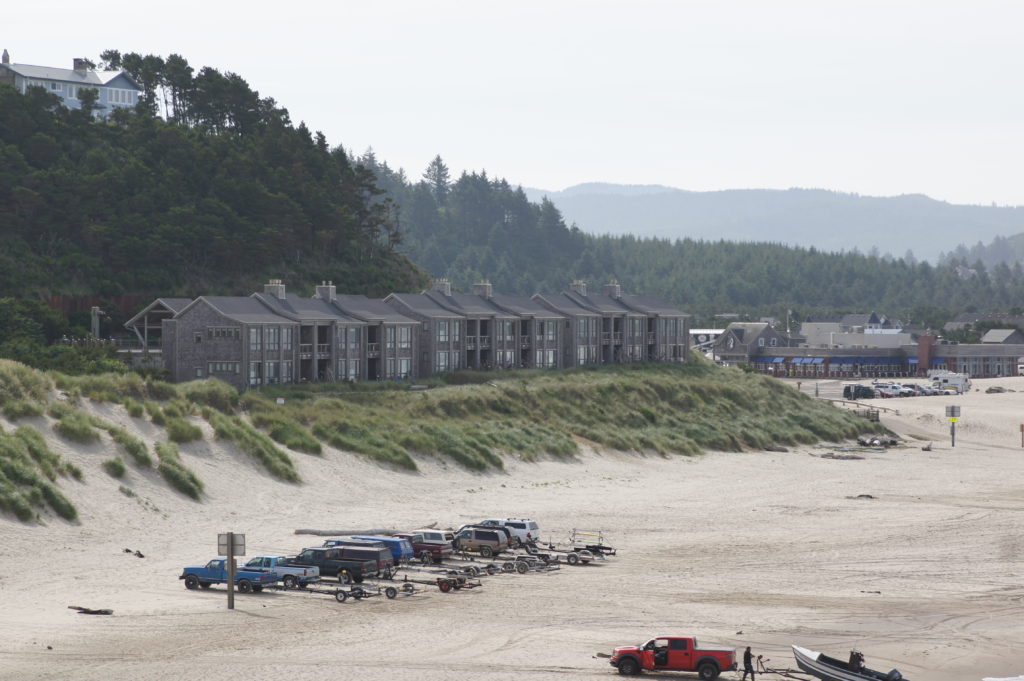
Where to stay: Inn at Cape Kiwanda
Yachats, Oregon
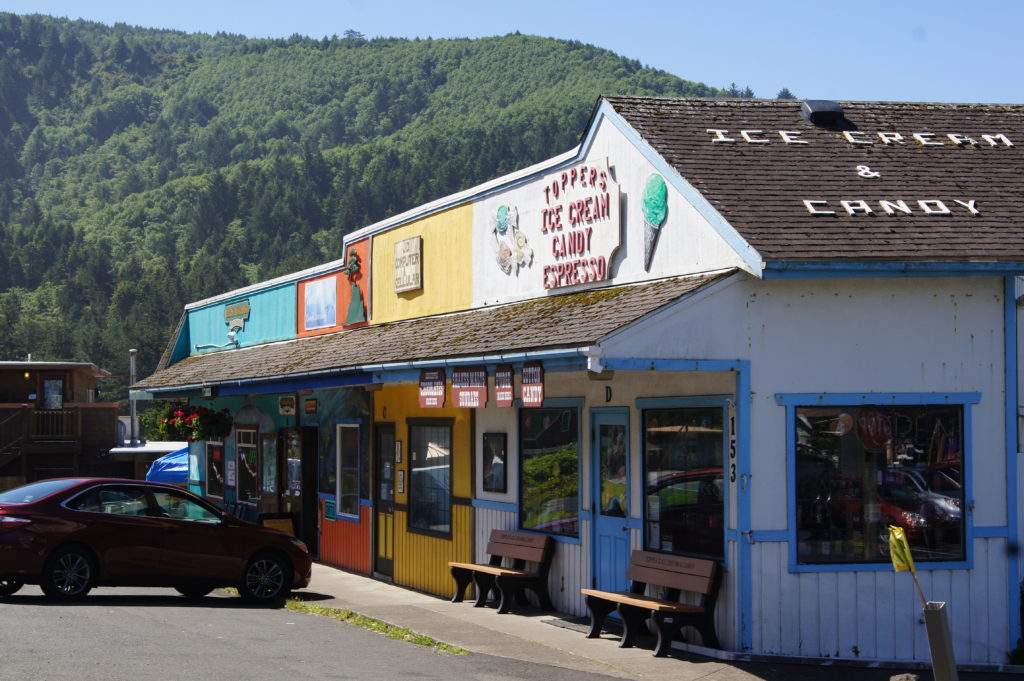
Indigenous people once hunted for sea creatures among the craggy cliffs of Cape Perpetua. Water crashed, swelled and exploded at jagged Thor’s Well, Spouting Horn and Devil’s Churn. I watched for sneaker waves while our children explored another tide pool, shielded by boulders. In late March, whales swim close to this shoreline as they begin their migration towards Alaska.
Where to stay: Overleaf Lodge & Spa
Florence, Oregon
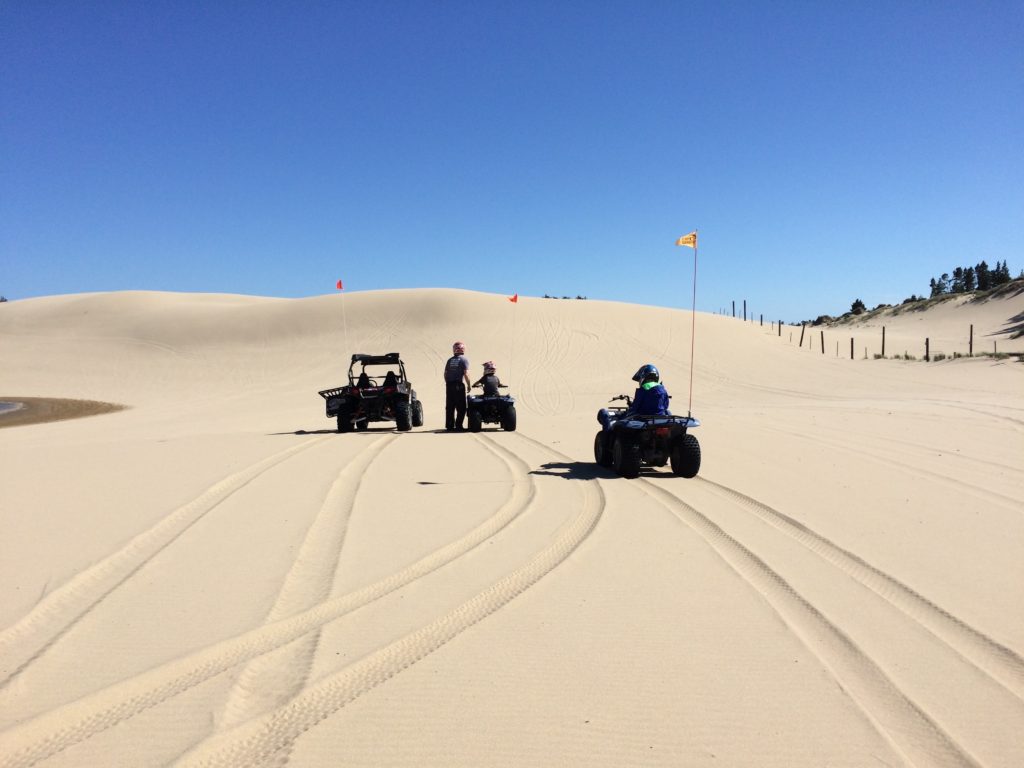
Whipping over miles of stark, wind-sculpted sand dunes in ATVS brought on a thrill at Oregon Dunes National Recreation Area. Others found joy in sand boarding down them.
Afterwards, we traded sand for sea at the privately-owned 80-year-old Sea Lion Caves. An elevator took us down to a cave where we watched wild sea lions haul themselves up on slippery rocks.
We hiked the short trail to Heceta Head Lighthouse, built in 1894. A century ago, lighthouses lit up Oregon’s rugged coastline to guide commerce ships in. Today, there are seven you can tour.
Bandon, Oregon
Next, we found our way out of an elaborate labyrinth Denny Dyke and his team had raked into the sand at Face Rock State Scenic Viewpoint before the tide could wash it away. Fat bikes zipped past us.
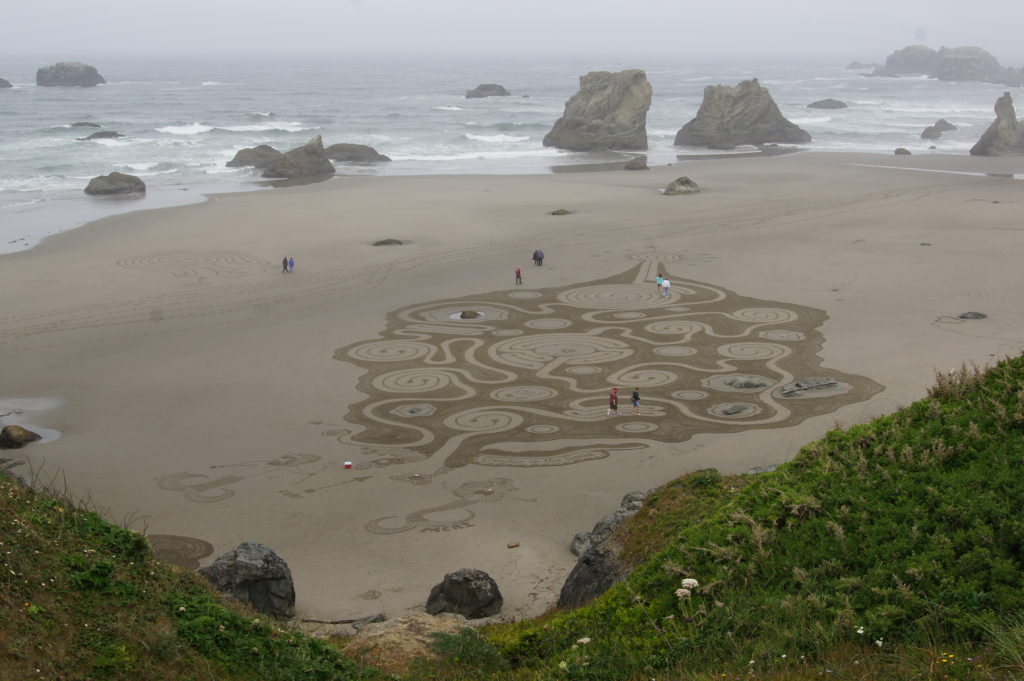
From there, we drove to Gold Beach where we took a fast-moving jet-boat tour up the Rogue River. The air around us heated up the further inland we went, and the scenery shifted. The cliffs got higher, making us feel smaller, while wildlife lifted its head from the water’s edge at the sound of our motor and darted away.
Where to stay: Bandon Inn
Crater Lake National Park
The magnetic, earthy blue waters of Crater Lake looked so refreshing that even when surrounded by glistening pure snow, I wanted to swim in it.
Seven thousand years ago, a 12,000 foot volcano called Mount Mazama erupted and then collapsed. Rain and snow filled the volcanic basin. Today, Crater Lake holds the deepest waters in America, and scientists say the cleanest. Cinder cones like Wizard Island poke out of its waters.
We drove along Rim Road, and stopped at Crater Lake Lodge for hot chocolate to warm us up.
Where to stay: Crater Lake Lodge
